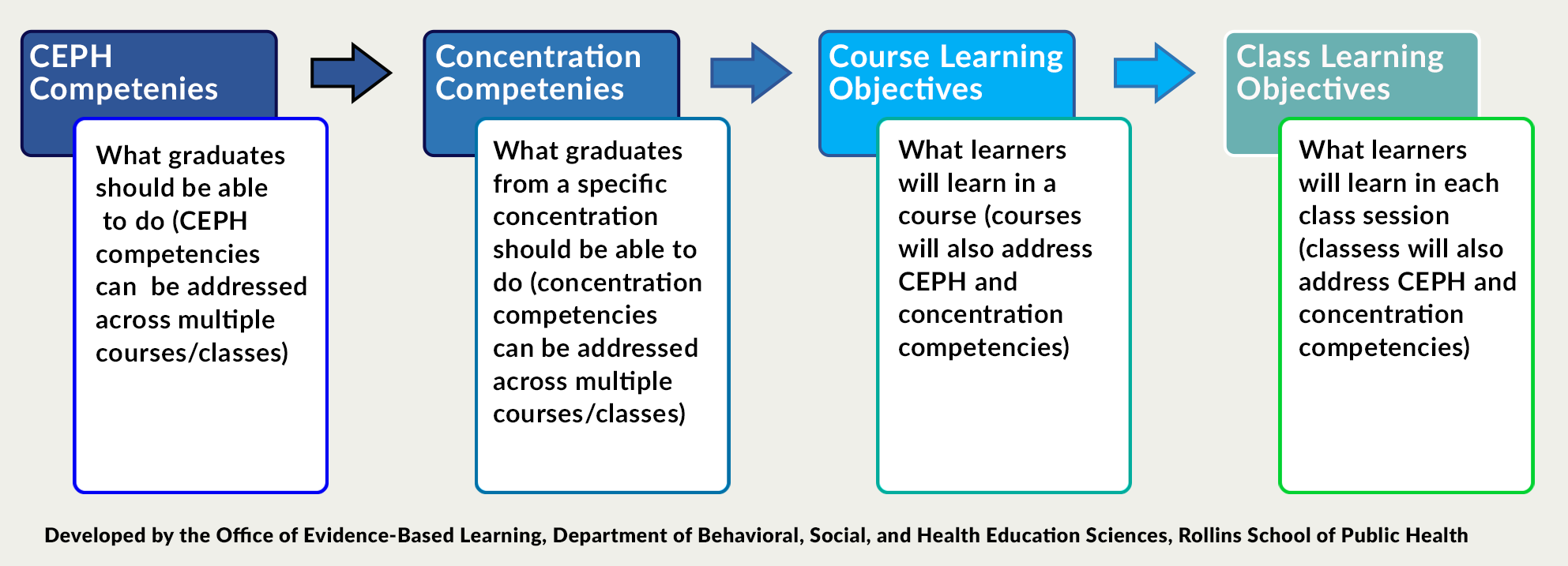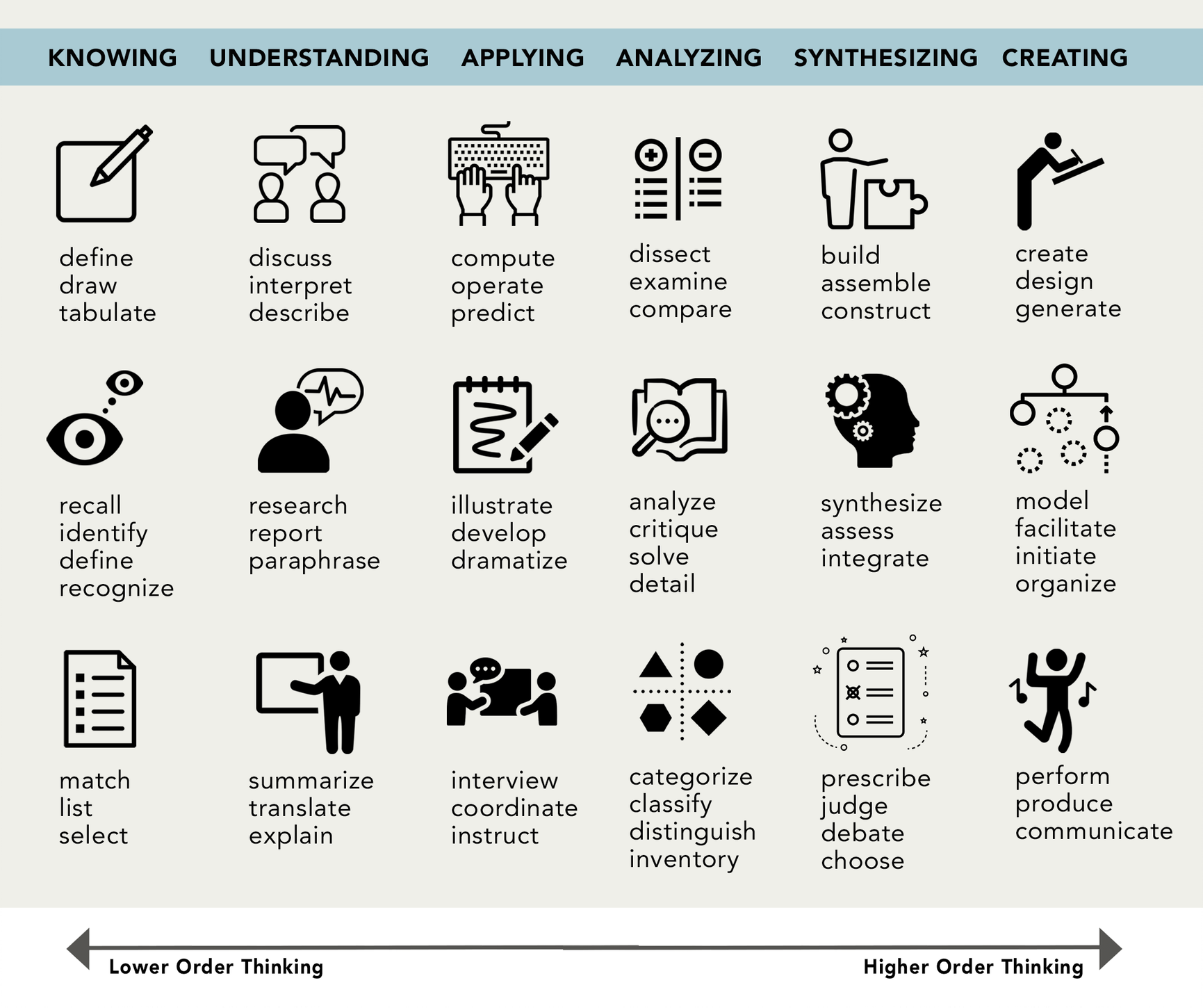
Following the Backward Design model, developing competencies and learning objectives (LOs) is the first step in course design. Learners perform best when there is clarity and transparency around expectations. It is important that in addition to stating the overall course competencies and LOs, learners are also presented with specific LOs and a brief overview of what they will cover in our weekly class(es). We typically apply this recommended teaching practice in face-to-face courses by starting our classes with some version of, “Today we are going to cover ….” Being clear about what learners are supposed to learn from each weekly session is even more important in an online course since the instructor is not present to explicitly provide this structure for their students.
Many of you have updated your course competencies and LOs as part of the CEPH reaccreditation review process. If you are teaching an RSPH core course or a concentration-required course, you must keep the CEPH foundational LOs and/or competencies that were assigned to your course. Elective courses may or may not cover CEPH competencies. With exceptions, CEPH competencies are often broadly stated, and they are typically met through culminating course assignments such as final papers or exams. Listing only course-level CEPH competencies or other broad LOs is not sufficient. Learners need the structure of class session-specific LOs to know what they are expected to learn in each session. Step 1 in building the Course Outline for your weekly class session is to develop LOs that are achievable at the end of each session.
For a review of differences/similarities between competencies and LOs, as well as alignment of course components, review the slide below from the Faculty Career Development Session Using competencies and learning objectives for effective teaching. A link to the entire session recording is available under Resources below.

Writing Behavioral Learning Objectives
A learning objective is a statement that:
- Begins with an action verb making it behavioral and measurable
- Describes what it is you want learners to know or be able to do after completing a unit or a class
For example: By the end of this class, you will be able to explain the difference between a competency and a learning objective.
When writing learning objectives, it can be helpful to review Bloom's Taxonomy. Below are Bloom's categories for lower-order thinking to higher-order thinking skills, starting with "knowing" (recall facts and basic concepts) at the low end, followed by "understanding" (explain ideas or concepts), "applying" (use information in new situations), "analyzing" (draw connections among ideas), "synthesizing" (justify a stance or position), and "creating" (produce new or original work) at the high end. Integrated into each category are corresponding action verbs that can be used to facilitate measurable outcomes.

Resources
Office of Evidence-Based Learning, BSHES, Rollins School of Public Health. (2018, November 5). Using competencies and learning objectives for effective teaching [Video]. Emory Instructure Media (Canvas).

